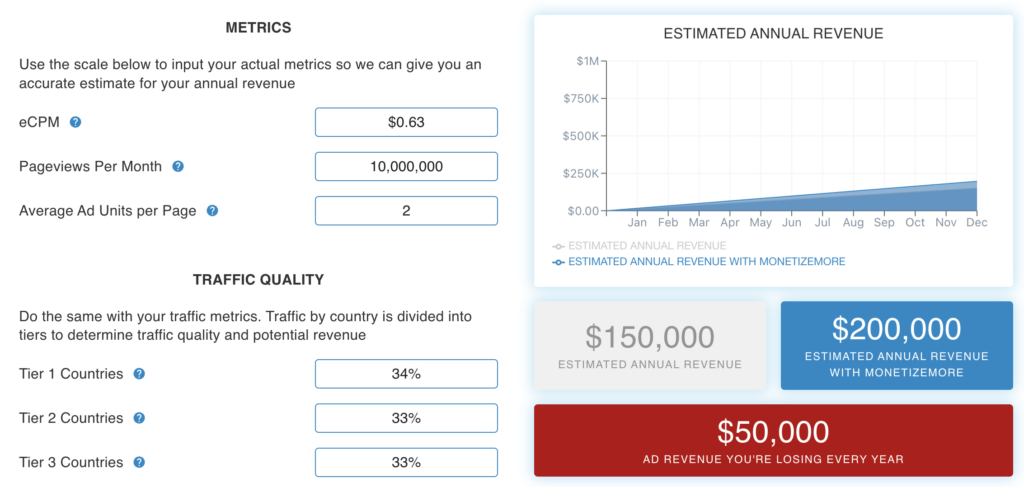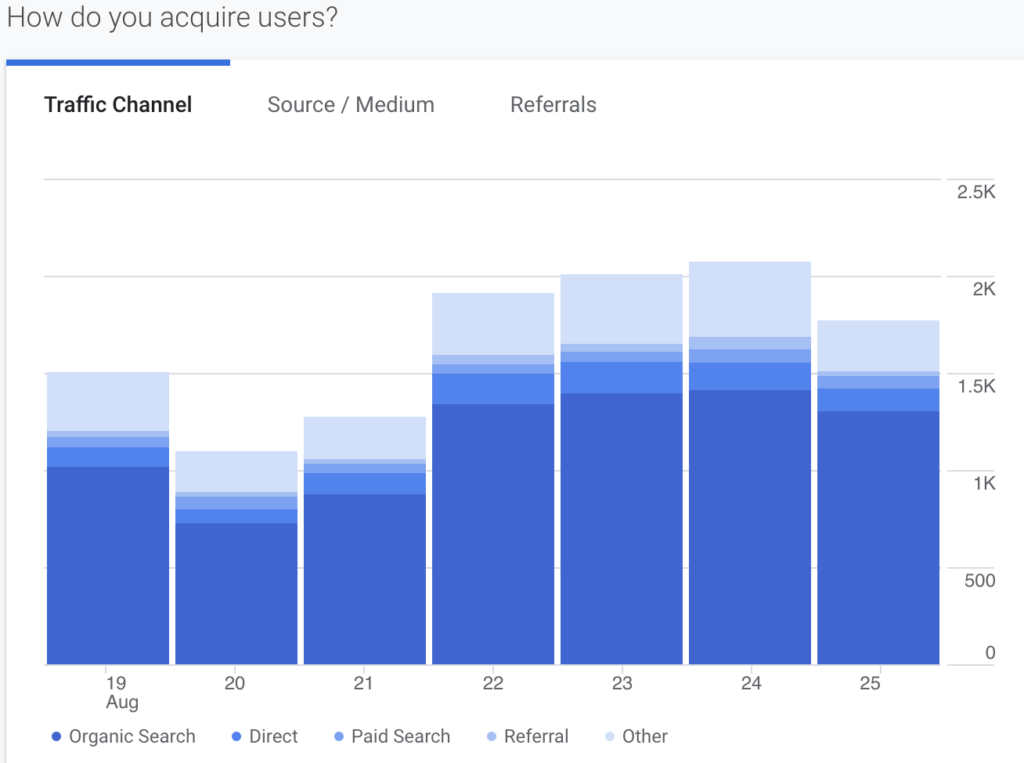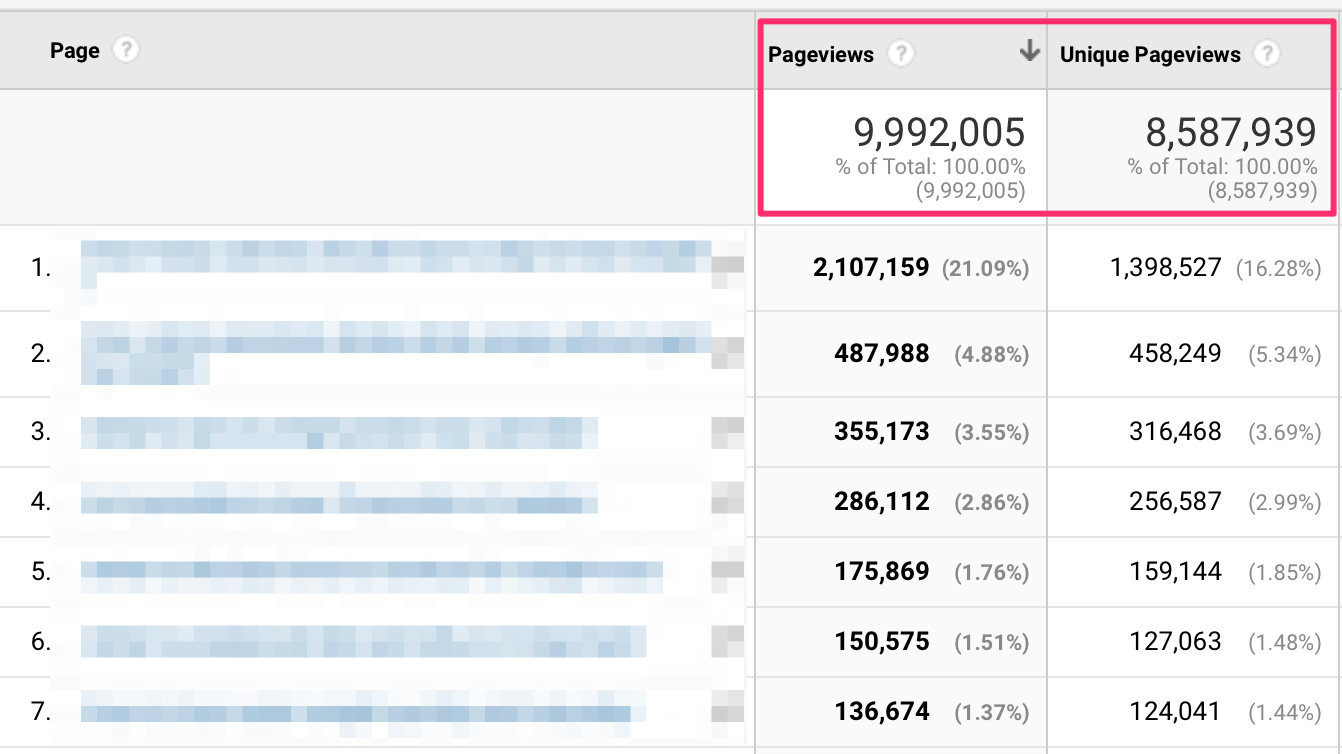Website ad revenue can be a lucrative aspect of running an online platform, but just how much can it really amount to? There is no limit to how much advertising revenue a website can make, offering a vast potential for monetization. However, understanding and measuring this potential requires looking at industry benchmarks.
You may know how to monetize a website & the golden tactics behind selling ad inventory. Before that, wouldn’t you want to calculate how much money you can make from the ads served on your site?
An ad revenue calculator is a powerful tool for roughly calculating your potential revenue depending on metrics like traffic, monthly pageviews, etc. This blog post helps you in that quest. These benchmarks provide a clearer picture of whether your site’s earnings are aligning with the amount of traffic it receives.
In this blog, we delve into the factors that influence website ad revenue and explore how you can maximize your site’s earning potential, no matter its size or traffic volume.
Why is Website Traffic Important?
It’s clear that you set up your own website for two reasons: to be found and for sales.
We’ll talk about how to make money from your website later in this article, but let’s first focus on how much traffic you should expect in the first place. Everyone always assumes more traffic equals more money. But is that always true? It would be great if your views turn into sales but that’s not always true. Less than 5% of the website traffic actually turns into leads. What is the remaining 95% doing? Just scrolling without converting.
Your website’s content is also a data hub for all things about your company and what value you are actually offering.
This is why traffic is so important. Traffic represents people who are interested in what you’re offering, and they’re coming to your website to learn something or do something—but not necessarily both. If they’re interested in what you offer, then they might become leads, which could turn into sales.
The status of your traffic has everything to do with the effectiveness of your marketing efforts, and it isn’t always as clear-cut as more traffic equals more sales.
There’s also another side: if not enough people are visiting your website, then that means you don’t have enough people aware of who you are or what you offer them. This could mean that people aren’t seeing your ads or aren’t aware of your brand; it could even mean that the content is not impactful enough for the incoming traffic to engage or convert.
How To Track Website Visitors?

In light of the fact that traffic is directly related to revenue produced by your website, you should know how much traffic your site generates.
In order to accomplish this, use this trusted industry tool, and it’s a free one, our ad revenue calculator.
You can get an estimate on how much ad revenue you can earn more with MonetizeMore by adding in the numbers for:
- eCPMs
- Pageviews per Month
- Average ad units per page
- Traffic coming from countries based on tier.
You can act proactive if your ad revenue is decreasing by analyzing what the problem is and prevent the stagnancy for good with our help. The main goal should be to consistently keep the ad dollars coming no matter what!
How do you estimate Website Ad Revenue?
The process of estimating website ad revenue is simple, but it takes reliable tools to get a decent estimate of net ad earnings.
These estimates are based on what these sites should be earning with AdSense, ad networks, and other ad management partners.
In real-world scenarios, seasonality, niche, ad providers, and traffic sources all have a significant impact on these numbers.
1- Estimate Monthly Pageviews
To estimate monthly pageviews, do the following:

- Take the latest 3-6 months of traffic from Google Analytics.

- Get the pageviews statistics from the Audience section in Google Analytics.
- Divide by the number of months you’ve collected the stats for.
This gives you the average monthly pageviews. Remember that if the site sees huge fluctuations in traffic trends or has a seasonal theme, the numbers won’t be totally accurate. Doesn’t matter, you just need to get a close estimate.
2- Estimating RPMs before calculating website ad revenue (Very Important)
One of the most important parts of running a successful website is knowing how much it should be earning. Doing so helps you plan for the future and can give you peace of mind about your business. If, for example, you’ve been doing research and find that the average revenue per thousand (RPM) for your industry is $2.50, and your RPM (revenue per milles) is currently at $2.00, then you know you have room to grow.
In most cases, RPM can be found by looking up your niche or industry on a website like SimilarWeb to see what the average traffic looks like. Most blogs will fall within a certain range: higher if they’re particularly well-known or if their owners are pushing hard to build it up, lower if they aren’t getting as much attention or aren’t trying as hard.
Some bloggers might find different averages for different niches within their blog—for example, I’ve seen sites that make more money from ads on their fashion section than their food section. It’s good to keep this in mind when determining what your average RPM range should be—if you’re not making much money from ads on your food posts but making plenty on your fashion posts, maybe that’s okay!
Finance sites’ RPMs are usually the highest in the range $30-$50.
3- Calculate your Revenue through RPMs
A good way to figure out your estimated ad revenue from your website is by using a formula. The formula looks like this:
Revenue = RPM x (Monthly page views / 1000)
It’s important to divide monthly pageviews by a thousand. Since the RPM is revenue per milles/thousand, skipping this step would cause a mess. For instance:
A website in the finance niche is getting roughly 500,000 page views a month. Let’s say the RPM for ads in the hobby industry was $30 (hypothetical). Divide that 500,000 by 1,000 and then plug in the numbers:
$30 x 500 = $15000 estimated ad revenue
This formula can be used to calculate estimated ad revenue at different traffic levels.
Website Ad Revenue by Niche
Based on the latest data from the publishers we’ve worked with globally, here’s an overview of how much ad revenue websites in various niches can potentially make:
1- Insurance:
- Average CPC: $19.87.
- This niche tops the list as one of the most profitable due to high ROI for advertisers.
2- Online Education:
- Average CPC: $10.74.
- It’s a rapidly growing niche, especially with the rise of digital learning platforms and online courses.
3- Online Banking:
- Average CPC: $10.50.
- The shift towards digital banking solutions has made this a trending niche.
4- Marketing & Advertising:
- Average CPC: $6.45.
- With every business seeking online visibility, this niche enjoys high revenue payouts from AdSense.
5- Internet:
- Average CPC: $3.11.
- Covers a wide range of topics and is popular due to the constant evolution of internet technologies.
6- Legal:
- Average CPC: $2.99.
- As laws evolve and businesses need to stay updated, this niche remains popular for AdSense arbitrage.
7- Automobile Dealership:
- Average CPC: $2.07.
- Profitable due to the high value associated with automobile sales and services.
8- Skincare:
- Average CPC: $1.90.
- The skincare and beauty niches are growing, driven by consumer interest in niche and quality products.
9- Cryptocurrency:
- Average CPC: $1.56.
- This has been a hot niche in recent years due to the surge in cryptocurrency trading and investment.
10- Health and Wellness:
- Average CPC: $1.62.
- It continues to grow as people increasingly focus on health, nutrition, and fitness.
These average CPC (Cost Per Click) values give an indication of the potential ad revenue. However, actual earnings will vary based on factors such as traffic volume, audience engagement, ad placement, and the specific advertisers in each niche.
MonetizeMore has been collecting this data through 13+ years of helping thousands of publishers generate over 100 million plus in revenue. Wanna be next? Get started here!
Website Ad Revenue Estimation Based on Ad Placements
Ad placements play a crucial role in determining the revenue potential of a website. How you leverage the ad inventory on your site can significantly influence user engagement, click-through rates (CTR), and, ultimately, the revenue you generate. Let’s explore how different ad placements can impact your website ad revenue:
1- Above the Fold (ATF) Placements:
- These are ads that appear in the visible area of the webpage as soon as it loads, without the need for scrolling.
- ATF placements generally have higher visibility, leading to higher CTR and ad revenue.
- Typical revenue estimation: This could be 1.5x to 2x higher than Below the Fold (BTF) placements, depending on the niche and audience engagement.
2- Below the Fold (BTF) Placements:
- These ads are located in areas that require users to scroll down the page.
- BTF placements often have lower CTR compared to ATF but can still be effective, especially for engaged readers.
- Revenue estimation: Generally lower than ATF, but in content-rich sites where users scroll, they can perform surprisingly well.
3- Sidebar and Banner Ads:
- Sidebar ads are placed along the sides of the webpage, while banners are usually at the top or bottom.
- These placements are often effective for brand awareness but might have lower engagement.
- Revenue estimation: This can vary widely; banners at the top usually perform better than sidebars.
4- Interstitial and Pop-up Ads:
- These ads appear as overlays on the webpage, either at certain intervals or during specific actions.
- While they are highly visible, they can be intrusive, potentially affecting user experience.
- Revenue estimation: High visibility can lead to higher CTR and revenue, but risk of user annoyance needs to be balanced.
5- Native Advertising:
- These ads blend in with the site’s content, appearing as part of the editorial flow.
- Native ads can have higher engagement rates due to their less intrusive nature.
- Revenue estimation: Often yields higher CTR and revenue, especially if well-integrated with content.
6- Video Ads:
- Video ads, especially those placed before video content (pre-roll), can have high engagement.
- They are generally more lucrative than standard display ads.
- Revenue estimation: Higher than most other placements, but depends on video content quality and relevance to the audience.
Website Ad Revenue Depending on Location
A website’s ad revenue from different tiers of countries can vary greatly. Websites with a majority of their traffic coming from Tier 1 countries can expect higher earnings compared to those with traffic predominantly from Tier 2 or Tier 3 countries. The actual revenue also depends on other factors like the niche of the website, the type of ads displayed, and the engagement level of the audience. Here are some general insights:
Tier 1 Countries (e.g., USA, UK, Canada, Australia)
- These countries usually have the highest CPC (Cost Per Click) and RPM (Revenue Per Mille) rates.
- In the USA, the CPC ranges from $0.45 to $0.61, with an RPM between $4.59 and $6.15 for English-speaking countries. This means that a website with high traffic from these countries can earn significantly more per 1000 page views compared to other regions.
Tier 2 Countries
- The CPC in these countries is generally lower than in Tier 1 countries. For example, Singapore has a CPC of $0.27, while the UAE has $0.15, and Japan has $0.14.
- Websites targeting these countries will earn less per 1000 page views compared to Tier 1 countries but can still generate significant revenue with high traffic volumes.
Tier 3 Countries
- The ad revenue from Tier 3 countries like Pakistan, Bangladesh, etc, is generally lower due to lower CPC and RPM rates.
- The specific numbers for Tier 3 countries are not readily available, but they are expected to be significantly lower than Tier 1 and Tier 2 countries.
Check out our case study on how Publab 5X’d their ad revenue with us here.
How Does Website Ad Revenue Work?
Once a publisher partners with an AdTech company, they make ads available to them. Whether the website owner places the ads or the company does depends on the adtech company.
How much your website should earn depends on the type of website you have and how popular it is. Ads are placed on a site by an adtech company to improve Google AdSense earnings. When a visitor clicks on the ad, you will earn ad revenue.
Ads come in two types: pay per click (PPC) and pay per view (PPV). PPC ads pay every time someone clicks on the ad and PPV ads pay a penny or two every time someone views them. A certain amount is taken off the top by AdTech companies so that you don’t have to worry about splitting ad revenues – this happens automatically before the payment.
Generally speaking, more pageviews equals more money from ads. Only visitors who aren’t using ad blockers will count towards your earnings (if people use ad blocker software, it means they can’t see your ads and therefore won’t convert).
Must Know AdTech Terms:
In studying how to maximize ad revenue on a website, you’ll come across some common jargon you need to know:
- RPM – Revenue per mille or revenue per 1000 visitors, the money a website earns from every thousand visitors.
- CPM – Cost per thousand impressions, the amount an advertiser expects to pay per 1,000 impressions.
- Sessions – The number of interactions a user has with a site, such as viewing multiple posts, clicking links, or interacting with multiple pages.
- Pageviews – The number of pages a visitor views per session. For example: If he/she views five blog posts, it will be counted as 5 pageviews.
- Above the fold or ATF – Refers to the space at the top of a web page that appears right after the site loads. It is the most popular and profitable ad placement on most websites.
- Header bidding – Publishers offering ad space to multiple ad exchanges.
The key to generating consistent ad revenue flow
When you’re looking to monetize your website, you have to decide how much emphasis you want to put on advertising. There are several ways to make money off of a website, but the most common is advertising. You may have heard that Google AdSense is the easiest way to earn money off of a website, and to a certain extent, that’s true, but not necessarily for beginners.
One of the first decisions you’ll have to make when considering how your site will be structured is whether or not you’re going to include content on your site that could attract advertisers. If your site offers a unique product or service, then it might be easy enough to find an advertiser who wants to work with you. Alternatively, if you run one of many sites that offer similar products or services, then it will take more effort to find an advertiser who is willing to pay for ad space on your site.
The general process for generating ad revenue on your website begins with finding an adtech company that you would like to work with. MonetizeMore and Mediavine are two popular options, and there are plenty of others from which to choose. The first step in the process of generating ad revenue is to create an account with one of these networks and fill out the necessary information, including your site’s traffic numbers and other details.
Follow these steps:
- Make sure your site gets a decent amount of traffic.
- Pick an ad provider.
- Sign up for an account and go with their instructions for setup.
- Keep posting quality content.
- Ads should be optimized or a higher-paying ad provider should be considered if traffic levels are high enough.
Action Plan
It can be useful to use a website ad revenue calculator to estimate what a site might earn at upcoming milestones or to compare the RPMs of two ad providers. In order to accurately estimate your website’s ad revenue potential, you should understand the overall process.
Start executing these steps today to get results:
- Use the website ad revenue estimator to understand the scope of your ad revenue growth.
- Apply for MonetizeMore if you are making at least $1,000 a month in ad revenue.
- Optimize the space above the fold
- Make your content ad-friendly by optimizing it. (50:50 content-ad ratio works well).
- Start using sticky ads.
- Leverage video ads.
Follow these steps and you will see better monetization success and get a better idea of what a site in your niche could make depending on the incoming traffic.
Wrap Up
It’s crucial for publishers to understand how much websites make from ads. Using revenue estimator tools can help them better sell ad space to advertisers, gauge ad performance, and optimize future campaigns.
As a result, they can continue to deliver relevant content for visitors to enjoy and maximize their revenues simultaneously by using the most engaging and lucrative ad formats as advised by MonetizeMore.
Check out what our publishers have to say on how their website ad revenue skyrocketed post partnering with us:
So, what are you waiting for? Click here to estimate how much you can make with us.
source https://www.monetizemore.com/blog/website-ad-revenue/




0 Comments